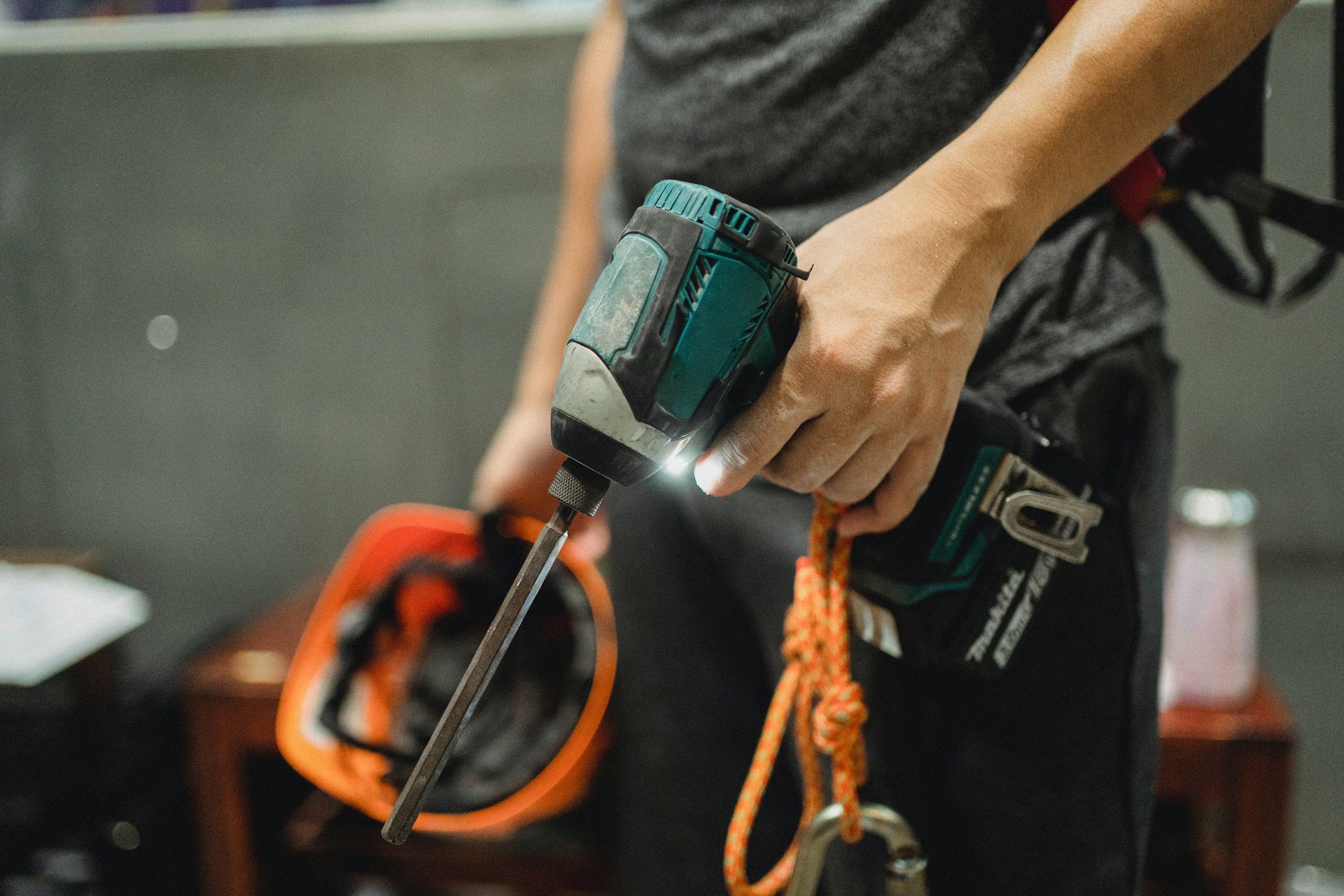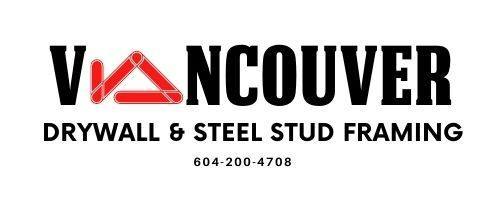Vancouver Steel Stud Framing
Cracks, Holes, and Stains: Understanding Drywall Problems
According to the Gypsum Statistics and Information report, an average home needs over 7 metric tons of gypsum, the material used to make drywall.
It's not just a surface for painting or wallpapering; it's an essential part of your property's structure and aesthetics. However, even the most expertly installed drywall is susceptible to damage over time.
Residents in Vancouver and beyond face various drywall issues, from minor cracks and holes to more severe problems like water damage and sagging. Understanding these problems and how to address them can save you time and money. This also calls for a trustworthy
drywall repair Vancouver.
Types of Drywall Damage and How to Repair Them
Cracks
Often a result of structural changes or moisture, cracks need immediate attention. Prevent widening by using joint compound and mesh tape for reinforcement.
How to Repair Cracks in Drywall
| Repair Type | What to Do | Required Tools & Materials |
|---|---|---|
| Surface Crack Repair | Fix cracks on seams by widening, removing loose tape, filling with compound, sanding, and painting. | Paint scraper, utility knife or chisel, joint compound, sandpaper. |
| Deep Crack Repair | Cut away the damaged tape, widen the crack, fill with compound, place fibreglass tape, apply compound layers, sand, and paint. | Razor knife, drywall saw, joint compound, fibreglass tape |
| Nail Pop Repair | Drive the nail back or replace it with a screw, cover it with compound, and add fibreglass tape, sand, and paint. | Utility knife, screwdriver or hammer, drywall screws, joint compound |
| Corner Bead Repair | Remove damaged compound or bead, replace bead if necessary, apply compound, sand, and paint. | Metal-cutting hacksaw, utility knife, pry bar or claw hammer, joint compound. |
Holes
Size dictates the repair approach. For small punctures, spackling paste suffices. Larger holes may require a patch and joint compound for a smooth finish. Consider the following:
Small Holes Repair
1. Cover the hole with a self-adhesive mesh patch.
2. Apply spackle or joint compound.
3. Sand smooth after drying.
4. Paint to match the wall.
Large Holes Repair
1. Cut out the damaged area to create a clean edge.
2. Install a support piece behind the drywall.
3. Attach a drywall patch to the support.
4. Apply self-adhesive mesh tape over the seams.
5. Cover with joint compound, sand smooth, and paint.
Stains
Indicative of water damage, stains require moisture source elimination followed by priming and painting to restore wall aesthetics.
- Identify the Source - Locate and fix the water leak source in areas like roofs, plumbing, windows, or HVAC units. Consider professional assistance if needed.
- Cleaning - Use a 10% bleach and water solution or a 50/50 vinegar and water solution. Apply, let sit, then dab off excess.
- Drying - Dry the treated area using a hairdryer or microfiber towel, or allow it to air dry.
- Priming - Apply an oil or shellac-based stain-blocking primer over the treated area.
- Painting - Paint over the primed area with a matching color. If necessary, consider repainting the entire wall or ceiling for uniformity.
Water Damage
Perhaps the most detrimental to drywall, water exposure can lead to warping, staining, and mould growth. Immediate action is required to dry out the affected area and replace any soggy drywall.
- Remove Damaged Area - Cut away water-damaged drywall sections to create a clean edge for repairs.
- Dry the Area - Utilize fans, dehumidifiers, and natural ventilation to thoroughly dry the exposed studs.
- Repair/Replace - Patch minor damages using joint compound. For larger damages, measure and cut new drywall to fit, and secure it with screws.
- Finishing Touches - Apply joint compound over seams and screws, using mesh tape for seams. Sand the dried compound smooth, then prime and paint to match the wall.
- Mould Prevention - Use chemical sanitizers to discourage mould growth. Avoid using bleach as it is not effective in preventing future mould growth.
- Prevention - After repairs, fix leaks and improve drainage to prevent future water damage. Use moisture-resistant materials in areas prone to water exposure.
Sagging
Drywall ceilings can begin to sag over time or due to moisture. This usually requires replacing the affected sections and ensuring the ceiling joists are not compromised.
Step 1: Identify the Cause
Determine if water damage, poor installation, or structural issues are responsible for the ceiling damage.
Step 2: Stabilize the Ceiling
Use support jacks to prop up the sagging area and stabilize it.
Step 3: Remove Damaged Material
Carefully remove any damaged or weakened materials from the ceiling.
Step 4: Address the Underlying Issue
Fix leaks causing water damage or perform necessary structural repairs to resolve the root issue.
Step 5: Replace Ceiling Materials
Install new drywall or other materials as required, ensuring proper attachment and leveling.
Step 6: Finish the Surface
Apply joint compound to smooth out uneven areas, sand the surface smooth, and paint the repaired area for a finished look.
Mould Growth
Mould can grow on and inside drywall in damp conditions. Removing mould-infested drywall and addressing the moisture source are critical to preventing health hazards.
Step 1: Identify and Assess Moisture Damage
- Identify and repair the source of moisture.
- Assess the extent of the mould damage.
Step 2: Personal Protection
- Wear protective gear such as gloves and masks.
- Isolate the work area to prevent mould spores from spreading.
Step 3: Cleaning the Surface
- Vacuum loose spores using a HEPA filter vacuum.
- Clean the area with a mould-killing solution and scrub thoroughly.
- Ensure the area is dried completely.
Step 4: Remove Moldy Drywall
- Cut out and remove sections of drywall affected by extensive mould.
- Clean exposed framing before replacing drywall.
Step 5: Seal and Paint
- Apply a mold-inhibiting primer to the cleaned surfaces.
- Repaint using mold-resistant paint.
Step 6: Prevent Future Growth
- Maintain indoor humidity below 50% using dehumidifiers and fans.
- Regularly inspect and maintain areas prone to moisture to prevent mould growth.
How to Prevent Drywall Damages
- Regular Inspections: Regularly inspect your drywall for any signs of damage, especially in areas prone to moisture or heavy traffic.
- Proper Installation: Ensuring your drywall is installed correctly can prevent many issues. This includes proper spacing between panels, correct joint compound application, and adequate frame securing.
- Moisture Control: Use dehumidifiers and ensure good ventilation in high-moisture areas like bathrooms and kitchens to prevent water damage and mould growth.
- Immediate Repairs: Addressing small issues promptly can prevent them from evolving into more significant problems. Small cracks and holes are much easier and cheaper than larger structural issues.

Minimize Damage with a Drywall Repair Vancouver
Drywall is essential for structural integrity and aesthetics in homes and buildings. However, various issues, such as cracks, holes, stains, water damage, sagging, and mould growth, can arise over time and impact the functionality and appearance of drywall.
Knowing how to repair these damages is beneficial for property owners. By promptly repairing damage and preventing future issues through regular inspections and maintenance, it’s easy to maintain the integrity and longevity of drywalls. while preserving the overall quality of the property.
Frequently Asked Questions
-
Can drywall support hanging objects without reinforcement?
Drywall alone can't fully support heavy objects. Use small nails or hangers for light items and anchors or screws in wall studs for heavier objects to ensure stability and avoid damage. Always secure very heavy items directly into studs with suitable hardware for safety.
-
How can I prevent drywall damage in high-traffic areas?
To protect drywall in high-traffic areas, you can do the following:
- Minimize wall contacts
- Use protective installations like chair rails, corner guards, or wall panels.
- Use washable or semi-gloss paint for easy cleaning and stain resistance.
-
Is it necessary to replace mould-infested drywall, or can it simply be cleaned?
Mould-infested drywall usually must be replaced due to deep penetration and potential structural compromise from moisture. While surface mould can be treated, removal and replacement are generally advised for health safety and to stop future growth.

Address
4214 Miller St. Vancouver, BC, V5N 3Z8 Canada
Phone
604-200-4708
vansteelstuds@gmail.com
CONTACT US TODAY!
Contact Us
We will get back to you as soon as possible
Please try again later
